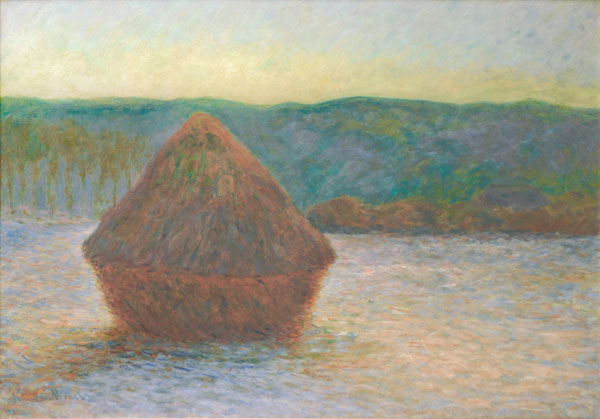Based on the most advanced scientific knowledge on vision, the Marmottan Monet museum, with the largest collection in the world of the painter’s work - among them the paintings of Giverny – wishes to grasp what best resumes the work of an artist and his originality: his look on things.
Thank his cataract?
Famous cases already known, but mostly superficially, be it in form of clichés such as the astigmatism of the Greco or Claude Monet’s cataract, have given a brief glance on how a painter can live and adapt to a handicap, go around it and even benefit from it. The ophthalmologists have been interested in this problem for a long time. We are aware that in medicine like in psychology, the definition of «normal» is only understood in a negative way: it is what is not dysfunctional. Claude Monet sought to set on the canvas the precise instances in those conditions of vision. As a result one can seek, while looking at each one of his works, the aspect of the privileged visual processes.
Sunsets and colored shadows
The exhibition presents some sixty works from the Marmottan Monet museum in Paris and from French and foreign institutions, among them the museum of Fine Arts of San Francisco, the museum of Art and History in Neuchâtel, the museum of the Douanes in Bordeaux or the Ny Carlsberg Glyptotek in Copenhaguen. The paintings are grouped together by sections - «low contrast», «color contrast», «sunsets», «colored shades», etc – that allow a detailed exploration of the theme. Construction of the outlines, perception of the forms, the representation of movement, chromatic sensation: how did this great creator adjust to a loss of capacity of one of the faculties directly needed in his activity? When he was at the summit of his art, Monet had no choice but to review his approach given a visual handicap that more or less disabled him. This put limits to his expression but, like in all games of constraints, this also led him to other, unexpected paths.
Illustration: The House Seen from the Rose Garden 1922-24, Musée Marmottan Monet, Paris
Monet in tune with modern neurophysiology
What part of the Nymphéas by Monet is the outcome of a process that started sixty years earlier at the Havre? The largest no doubt. But what other part can be the result of the battle he fought due to his cataract and its stressful effects? Dr Philippe Lanthony, an ophthalmologist specialized in the pathology of color vision at the Hospital of Quinze-Vingts in Paris, explains, « Monet wished to have the newest look possible on the world. He said he did not paint a leaf, he painted the green stain he saw (…). From the beginning he dissociated the information regarding the color from the one related to the form and the spatial situation. We know though from the most recent research in neurophysiology that this process is very close to the one the visual system follows in order to function. »
Illustration: The House Seen from the Rose Garden 1922-24, Musée Marmottan Monet, Paris
|




